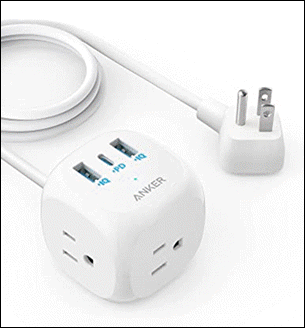Ed Selley
2025-07-21 05:00:00
www.trustedreviews.com
Verdict
The Cambridge Audio is a superb compact power amplifier that delivers a genuinely musical and engaging performance. Not only will it work brilliantly with a selection of Cambridge Audio products, it is a perfect solution for many other streaming and digital devices too. Well done Cambridge Audio
-
Sounds great -
Very well made -
Useful selection of inputs
-
Odd standby behaviour -
No perfect Cambridge Audio partner -
Neither black nor silver
Key Features
-
Class D amp
Smooth, dynamic, and powerful delivery of audio -
Add a streamer
Like Cambridge’s own MXN10 -
Power
70W into 4ohms
Introduction
A common theme over the last few years is that audio equipment generally does more than its predecessors did. Amplifiers have grown digital inputs and complete streaming modules, streamers are generally DACs and preamps as well and far more things have a headphone socket than was the case until recently.
Against this, the Cambridge Audio MXW70 feels like a throwback to an earlier time. As I shall cover, it does one thing and one thing only and that feels rather at odds with pretty much everything else. Trusted Reviews is not a place that goes in for looking at really very tweaky bits of hi-fi equipment so you might reasonably ask, why is it here?
The reason is that, while the MXW70 only does one thing, that one thing is of use to a considerable number of different products. It might be better to see it as a missing jigsaw puzzle piece that works in a variety of different puzzles.
In order to see if the Cambridge Audio is able to perform this trick for you, I need to look at what it does and how it does it.
Price
The Cambridge Audio is available in the UK from August 2025 for £499.95. It is available from the Cambridge Audio website direct and via the nationwide chain of Richer Sounds stores.
In the USA, it can be purchased direct from Cambridge Audio for $599, while in Australia, no price has been given as yet but Cambridge Audio does sell product there so it’s only a matter of time.
As an introductory offer, Cambridge Audio has also dropped the price of the MXN10 streamer; one of the devices that they see you using the MXW70 with, to £349. This makes for a tempting partnership but, as I shall cover, far from the only one that might work.
Design
- A simple grey box (and only grey)
- Solidly built
- Two matching components
- Some slightly odd behavioural quirks
A few years ago, Cambridge Audio decided that it was going to stop making black and silver boxes and instead make a single finish that could bridge the gap between the two.
The result is a distinctive silvery grey that, with the best will in the world, doesn’t quite meet the brief of being as happy with both finishes as it could be but that does look rather smart when used in a stack of Cambridge Audio devices. Cambridge Audio has done limited production runs of other devices in black but there is no indication they will do so here.

The MXW70 itself feels solid and well made though. Cambridge Audio is very proficient at making solid casework and this is no exception. You can argue that £500 is a fair amount of money for a small box but if you pick the MXW70 up, you can start to see where some of the money has gone. There isn’t much out there at similar money that feels as solid as it does.
It also helps that there are not one but two devices that Cambridge Audio already makes that are a visual match for the MXW70. Both the MXN10 network streamer and the DacMagic 200M DAC are capable of acting as preamps and will sit with the MXW70 as a matching stack of components.
I’m sure that at this point, Cambridge Audio is a little annoyed that the Duo phono stage and headphone amp hasn’t been so equipped too.


Some aspects of how the MXW70 works are a bit quirky though. On this sample at least, from the moment power is supplied to the unit the white light on the power button glows and it glows with the same intensity whether the amp is on or off. Disconnect the power and this light glows for a disconcertingly long time afterwards.
You get used to it but it could be a little more reassuring. I have also had the review sample put a hum through the speakers when connected to an Eversolo streamer via RCA and when both units are switched off but this hasn’t been the case with other devices tested here.
Specification
- 70 watts of class D power in stereo
- … and 250 watts in mono
- Balanced and unbalanced inputs
- Just add a volume control
The engine room of the Cambridge Audio is a usefully substantial device. It’s a Hypex NCORE Class D module and it’s capable of very decent performance. It isn’t the first time that Cambridge Audio has made use of it either.
Effectively, it takes the amplification from the Evo 75 (where, for reasons unknown, it seems to be good for an extra 5 watts) all in one system and repurposes it. Cambridge Audio is keen to stress that both the Evo 75 and MXW70 are not simply off the shelf modules in a box and make use of a bespoke output stage that more closely follows Cambridge Audio design practise.


Power is quoted at 70 watts into 8 ohms which should be enough for most requirements but, if you are sat reading this thinking it sounds a bit feeble, you can bridge the MXW70 which means that it becomes a single channel amplifier (that is to say, you’ll need two of them for a stereo system) and avail yourself of 250 watts into 8 ohms which should be enough for pretty much any sane domestic requirement.
Connectivity on the MXW70 is simple but effective. It offers both RCA and XLR inputs on the rear panel and makes power available to a single set of binding posts. Everything on the back panels looks and feels like it’s come from the CX range of components which is no bad thing as they feel every bit as solid here as they do there and while the back panel is busy, it’s logically arranged.
The presence of balanced inputs something you don’t see very much at this price point but it’s a welcome addition as it does offer the scope for higher potential performance with suitably equipped partnering devices.


And, here’s the thing. There are loads of potential partnering devices. Cambridge Audio would obviously prefer you to keep things in house but, if you own a WiiM Ultra, a Bluesound Node (or Node ICON), an Eversolo streamer or one of the various iFi Audio DAC preamps, the MXW70 is going to strut its stuff with all of them.
Then, there are the full size CXN100 and EXN100 streamers from Cambridge Audio which would also work with one or two MXW70s very happily.
On a completely different note, do you own an AV Receiver that can decode more channels than it has on board? The MXW70 is going to be every bit as useful there too. As noted, the Cambridge Audio ‘only’ does one thing but there are a great many potential applications for it.
Performance
- Genuinely sounds like a Cambridge Audio product
- Able to handle some very demanding speakers
- Sensitive input helps gain
- Perfectly happy outside a Cambridge Audio system
When you read in the press notes that Cambridge Audio has tuned the output of the MXW70 to sound more like a Cambridge Audio product, it’s a statement you have to take at face value. I could take the lid off and peer intently at the circuit but I’m not going to know for sure if that is what I see is attached to every NCore amplifier or not really.
The thing is though, to listen to the MXW70 with an Edge A integrated amplifier, also made by Cambridge Audio (which works on completely different principles and has totally different parts inside it), there are genuine similarities between the two devices.
Listen to the dynamic and gently euphoric live version of Tour De France by Kraftwerk on their Minimum Maximum album and the MXW70 does a wonderful job of capturing the driving energy of the track. It’s a big, confident and spacious sound that does justice to the huge arena and the delighted audience.
It’s tonally convincing too. The opening Friends Between Us on A Certain Ratio’s ACR Loco album is a gorgeous recording, packed full of natural instruments and vocals. The MXW70 ensures that everything sounds rich, real and believable. There are precious few clues about the topology of the Cambridge Audio to listen to it. There are points where the performance is almost warm but it’s warm without losing the bite and drive the track needs once the track livens up.


There’s no shortage of grunt too. I kicked off using the MXW70 with a pair of Q Acoustics 5020 standmount speakers that I keep on hand for devices like this. The results were so effortless that I quickly substituted a pair of Neat Petite Classic speakers at four times the price of the Cambridge Audio and it was still able to delight.
Intrigued, I then attached a pair of Kudos Titan 505 speakers at a brisk eighteen times the price. Was the result the best I’ve ever heard these speakers sound? No… but it was far, far better than I thought it was going to be. Even before you look at the bridging option, the MXW70 has the scope to handle speakers that are far more demanding than the £500 price tag might suggest it can.
There’s another little detail in the Cambridge Audio’s specification that helps this too. The inputs (both XLR and RCA) are usefully sensitive and this means that the 70 watts of power goes an awfully long way. Unless you have a barn to fill and speakers made of granite, the MXW70 is going to drive them effortlessly well and give you levels of headroom that some devices with notionally more power can struggle to deliver connected to the same source.


And, so be clear, in the course of testing, I used multiple sources and MXW70 did what it did across all of them. Partnering it with the MXN10 is – as Cambridge Audio might hope – an excellent partnership… but quite a limited one. The MXN10 has no other digital inputs or extra connectivity which means it’s a great sounding partnership but not a hugely flexible one.
Using Bluesound’s formidable Node Icon, which has inputs for days, the resulting combination is incredibly versatile and would work in a huge variety of situations. A huge selection of audio equipment in 2025 is equipped to run as a preamp and the MXW70 is primed and ready to work with all of it.
Should you buy it?
The Cambridge Audio feels like the right product at the right time. It can be connected to a wide range of devices reviewed on this site and the result is a complete system that will deliver sparkling performance. The presence of those balanced inputs makes the Cambridge Audio pretty rare at the price and further improves the impressive flexibility.
Used in house, the two matching components for the MXW70 have different issues. The MXN10 has no extra digital inputs which limits the functionality. The DacMagic 200M does have digital inputs but does without any streaming and doesn’t have remote volume control. At the moment, the best matches for this little amplifier are not actually made by the same company
Final Thoughts
The Cambridge Audio might be seen as an anachronism when seen against all in one systems that do everything but it fits into this world better than you might think.
Many streaming preamp/DAC devices are an MXW70 away from being a complete system. Cambridge Audio has had great success over the years exploiting niches and delivering the right product to exploit it. This feels like the right product for the moment.
How We Test
We test every amplifier we review thoroughly over an extended period of time. We use industry standard tests to compare features properly.
We’ll always tell you what we find. We never, ever, accept money to review a product.
Find out more about how we test in our ethics policy.
- Tested for several days
- Tested with real world use
FAQs
The MXW70 supports 2x70W (8ohm stereo), 2x 125W (4ohm stereo) and 250W (8ohm mono).
Full Specs
| Cambridge Audio MXW70 Review | |
|---|---|
| UK RRP | £499 |
| USA RRP | $599 |
| EU RRP | €599 |
| Manufacturer | Cambridge Audio |
| Size (Dimensions) | 215 x 215 x 57 MM |
| Weight | 1.65 KG |
| Release Date | 2025 |
| Amplifier Type | Power |
| Frequency Range | – Hz |
| Amplification | Class D |
| Impedance | 22 ohms |
| Stated Power | 300 W |
| Outputs | RCA, 12v Trigger pass-through |
Meet the Anker 20W USB C Power Strip, the ultimate desk power solution! With 9,659 ratings and a stellar 4.6 out of 5 stars, it’s a trusted favorite for its reliability and performance. Over 3K+ units were bought in the past month!
This compact power cube features 3 AC outlets, 2 USB-A ports, and 1 USB-C port to power everything on your desk with ease. Equipped with a 7-point safety system, including fire resistance, circuit-overload protection, and short-circuit protection, it gives you peace of mind. Plus, enjoy super-fast charging for your devices.
Grab this versatile power strip for only $13.99. Buy Now on Amazon!
Help Power Techcratic’s Future – Scan To Support
If Techcratic’s content and insights have helped you, consider giving back by supporting the platform with crypto. Every contribution makes a difference, whether it’s for high-quality content, server maintenance, or future updates. Techcratic is constantly evolving, and your support helps drive that progress.
As a solo operator who wears all the hats, creating content, managing the tech, and running the site, your support allows me to stay focused on delivering valuable resources. Your support keeps everything running smoothly and enables me to continue creating the content you love. I’m deeply grateful for your support, it truly means the world to me! Thank you!
|
BITCOIN
bc1qlszw7elx2qahjwvaryh0tkgg8y68enw30gpvge Scan the QR code with your crypto wallet app |
|
DOGECOIN
D64GwvvYQxFXYyan3oQCrmWfidf6T3JpBA Scan the QR code with your crypto wallet app |
|
ETHEREUM
0xe9BC980DF3d985730dA827996B43E4A62CCBAA7a Scan the QR code with your crypto wallet app |
Please read the Privacy and Security Disclaimer on how Techcratic handles your support.
Disclaimer: As an Amazon Associate, Techcratic may earn from qualifying purchases.









































































































